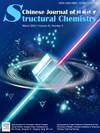阳极-电解质界面的微环境调节使锌阳极高度稳定
IF 5.9
4区 化学
Q1 CHEMISTRY, INORGANIC & NUCLEAR
引用次数: 0
摘要
锌阳极-电解质界面(AEI)的副反应和枝晶生长限制了锌离子电池的电化学性能。本文引入蛋氨酸(Met)作为电解质添加剂,从三个方面解决了上述问题:首先,蛋氨酸通过氨基/甲基硫基锚定在Zn阳极上形成贫水AEI,从而提高析氢反应的过电位;其次,Met作为pH缓冲液中和HER生成的OH−,从而防止副产物(如Zn4SO4(OH)6⋅xH2O)的形成;第三,通过静电相互作用,Zn2+可以被锚定的Met的羧基捕获,从而促进Zn的致密和扁平沉积。因此,锌||锌对称电池在1.0 mA cm - 2, 1.0 mAh cm - 2下的循环寿命为3200小时,在5.0 mA cm - 2, 5.0 mAh cm - 2下的循环寿命为1400小时。此外,在5.0 a g−1下工作7000次后,Zn||VO2满电池的容量保持率为91.0%。本研究提供了一种通过整合分子吸附、pH缓冲和Zn2+捕获策略来调节AEI界面微环境的新策略,以设计先进的工业导向电池。本文章由计算机程序翻译,如有差异,请以英文原文为准。

Microenvironment regulation of anode-electrolyte interface enables highly stable Zn anodes
H2O-induced side reactions and dendrite growth occurring at the Zn anode-electrolyte interface (AEI) limit the electrochemical performances of aqueous zinc ion batteries. Herein, methionine (Met) is introduced as an electrolyte additive to solve the above issues by three aspects: Firstly, Met is anchored on Zn anode by amino/methylthio groups to form a H2O-poor AEI, thus increasing the overpotential of hydrogen evolution reaction (HER); secondly, Met serves as a pH buffer to neutralize the HER generated OH−, thereby preventing the formation of by-products (e.g. Zn4SO4(OH)6⋅xH2O); thirdly, Zn2+ could be captured by carboxyl group of the anchored Met through electrostatic interaction, which promotes the dense and flat Zn deposition. Consequently, the Zn||Zn symmetric cell obtains a long cycle life of 3200 h at 1.0 mA cm−2, 1.0 mAh cm−2, and 1400 h at 5.0 mA cm−2, 5.0 mAh cm−2. Moreover, Zn||VO2 full cell exhibits a capacity retention of 91.0% after operating for 7000 cycles at 5.0 A g−1. This study offers a novel strategy for modulating the interface microenvironment of AEI via integrating the molecular adsorption, pH buffer, and Zn2+ capture strategies to design advanced industrial-oriented batteries.
求助全文
通过发布文献求助,成功后即可免费获取论文全文。
去求助
来源期刊

结构化学
化学-晶体学
CiteScore
4.70
自引率
22.70%
发文量
5334
审稿时长
13 days
期刊介绍:
Chinese Journal of Structural Chemistry “JIEGOU HUAXUE ”, an academic journal consisting of reviews, articles, communications and notes, provides a forum for the reporting and discussion of current novel research achievements in the fields of structural chemistry, crystallography, spectroscopy, quantum chemistry, pharmaceutical chemistry, biochemistry, material science, etc. Structural Chemistry has been indexed by SCI, CA, and some other prestigious publications.
 求助内容:
求助内容: 应助结果提醒方式:
应助结果提醒方式:


